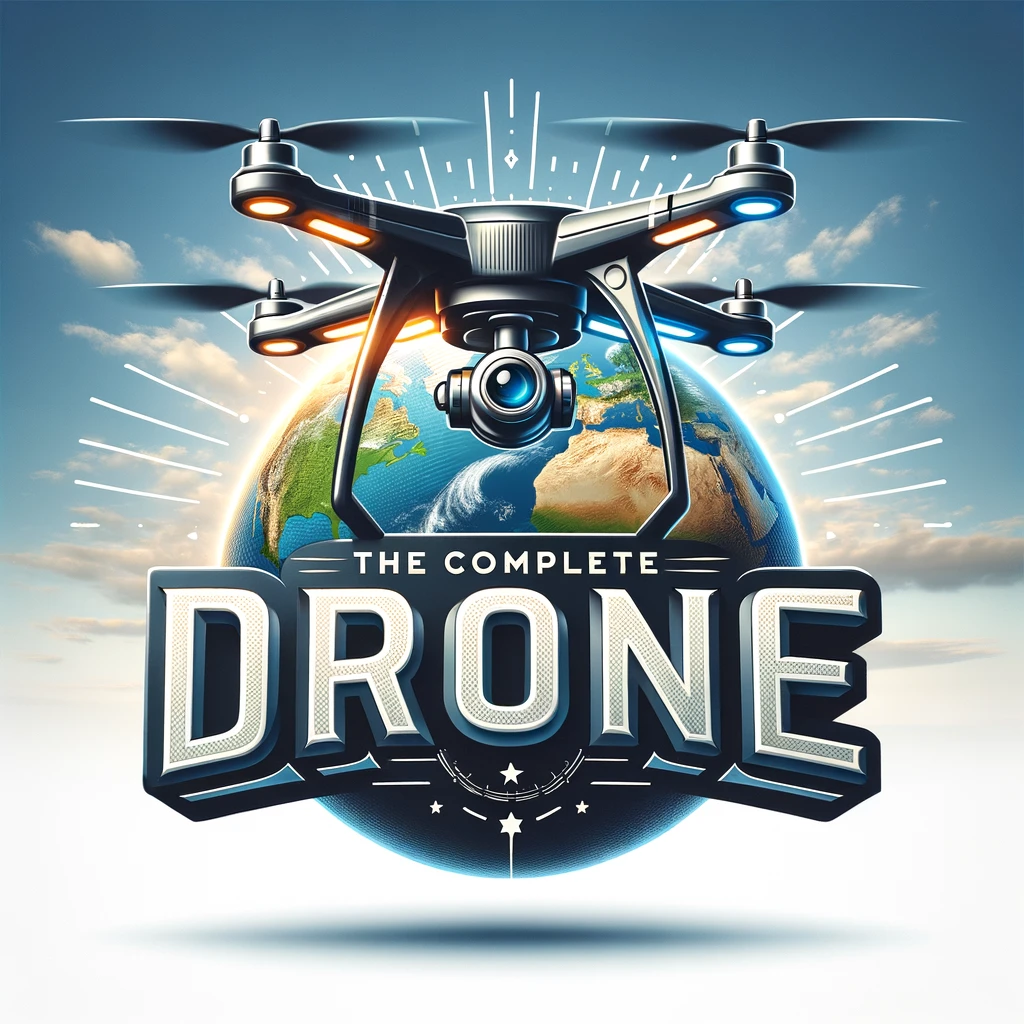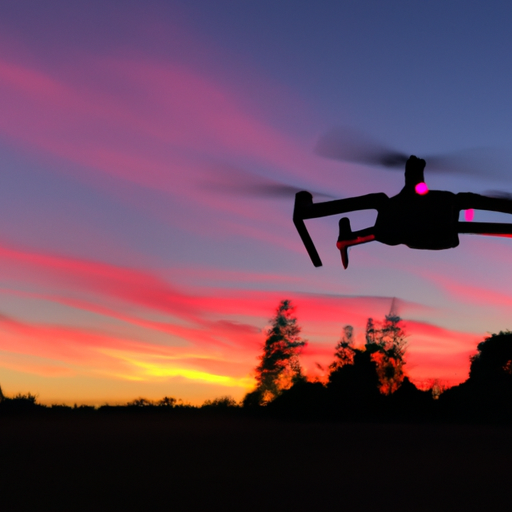Imagine the thrill of remotely piloting a drone ball, guiding it effortlessly through the air while creating a mesmerizing spectacle for both yourself and your loved ones. In this article, we explore the exciting world of drone balls and unravel the mystery of their control range. Whether you’re a beginner seeking a thrilling new hobby or searching for a unique form of entertainment for your family, understanding the range capabilities of these futuristic gadgets will surely ignite your curiosity and ignite a new level of exhilaration in you.
Factors influencing drone control range
When it comes to controlling a drone, there are several factors that can influence its range of operation. Understanding these factors is crucial for any drone enthusiast or professional pilot to ensure smooth and uninterrupted flights. The four main factors that affect drone control range are signal transmission technology, type of drone, environmental conditions, and interference sources.
Signal transmission technology
The type of technology used for signal transmission plays a significant role in determining the control range of a drone. Different types of drones utilize various technologies, each with its own advantages and limitations.
-
Radio-controlled (RC) drones: These drones use radio frequencies to establish a connection between the drone and the controller. RC drones typically have a shorter control range compared to other types of drones, making them suitable for indoor or close-range outdoor flights.
-
Wi-Fi-controlled drones: These drones rely on Wi-Fi signals to establish a connection. While Wi-Fi-controlled drones offer a greater range compared to RC drones, they can be susceptible to interference from other Wi-Fi devices or signal congestion in crowded areas.
-
Bluetooth-controlled drones: Drones using Bluetooth technology offer a shorter control range compared to Wi-Fi-controlled drones. They are ideal for short-range flights or indoor use where the control distance is limited.
-
Mobile network-controlled drones: In recent years, drones that utilize mobile networks for control have become increasingly popular. These drones can achieve longer control ranges, leveraging the coverage provided by cellular networks. However, the control range may still be limited to areas with good network coverage.
-
Satellite-controlled drones: The most advanced drones on the market utilize satellite communication systems to establish their control range. These drones have the ability to operate in remote areas and can achieve remarkable control distances. However, the cost and complexity associated with satellite-controlled drones often make them suitable for specialized applications rather than everyday use.
Type of drone
The type of drone being used also has a significant impact on its control range. Drones can be classified into different categories based on their intended purpose and performance capabilities.
-
Entry-level drones: Designed for beginners, entry-level drones typically have limited control ranges. These drones are ideal for learning the basics of flight control and maneuvering in a controlled environment.
-
Consumer-grade drones: Consumer-grade drones are popular among hobbyists and casual users. They offer better control range compared to entry-level drones, allowing for more adventurous flights in open areas.
-
Professional-grade drones: These drones are built for professional photographers, videographers, and drone pilots. They often come equipped with advanced features and longer control ranges, making them suitable for capturing breathtaking aerial footage or conducting specialized operations.
-
Military-grade drones: Military-grade drones are designed for military applications and remote surveillance. These drones can have extensive control ranges and advanced communication systems, allowing for long-distance operations in challenging environments.
-
Custom-built drones: Drone enthusiasts who build their own drones have the flexibility to customize their control range based on their specific requirements. The control range of custom-built drones can vary widely, depending on the components used and the expertise of the builder.
Environmental conditions
The environment in which a drone operates also affects its control range. Various factors related to the surroundings can impact the ability to establish a reliable connection between the drone and the controller.
-
Line-of-sight (LOS) range: Maintaining a clear line of sight between the drone and the controller is crucial for maximizing control range. As obstructions increase, such as buildings, trees, or even people, the control range may be significantly reduced.
-
Obstacles: Physical obstacles, such as buildings, mountains, or dense vegetation, can interfere with the signal transmission between the drone and the controller. It is important to consider the surroundings and choose an appropriate flight location to minimize interference.
-
Weather conditions: Adverse weather conditions, such as strong winds, heavy rain, or fog, can have a negative impact on the control range. It is vital to adhere to weather guidelines and avoid flying in conditions that may affect signal transmission or pose a risk to the drone’s stability.
-
Terrain: The geographical terrain can affect the control range of a drone. Flying in areas with hills, valleys, or uneven terrain may result in signal disruptions due to the limitations of wireless transmission.
Interference sources
Interference from external sources can disrupt the control range of a drone. Various factors can introduce unwanted signals or electromagnetic radiation, leading to degraded or lost connection between the drone and the controller.
-
Radio frequency (RF) interference: RF interference can come from sources such as other electronic devices, nearby radio towers, or even microwave ovens. It is important to be aware of these potential interference sources and avoid flying in areas with high RF activity.
-
Electromagnetic interference (EMI): EMI can occur when radio signals interact with electrical or electronic devices. This interference can disrupt the control signal of a drone, leading to decreased control range.
-
Electromagnetic radiation (EMR): Being in close proximity to sources of EMR, such as power lines or high-voltage equipment, can introduce interference and reduce control range.
-
Power lines and electrical equipment: Flying near power lines or large electrical equipment can cause interference due to the electromagnetic fields they generate. It is essential to maintain a safe distance from such sources to avoid signal loss or disruptions.
-
Other wireless devices: The increasing prevalence of wireless devices, such as smartphones, Wi-Fi routers, or Bluetooth speakers, can introduce signal congestion and interference. Flying in areas with a high density of wireless devices may limit the control range of a drone.
Range limitations for different types of control
Depending on the purpose and technology used, drones can offer varying control ranges. Understanding these range limitations is vital for planning flights and ensuring compliance with local regulations.
Short-range control
Short-range control refers to the ability to control a drone within a limited distance. This often involves flying in close proximity or in indoor environments.
-
Indoor drone control: Within indoor spaces, drones can typically be controlled without significant limitations in range. However, the control range may still vary based on the specific signal transmission technology used. RC drones and Bluetooth-controlled drones are commonly used for indoor flights due to their shorter range.
-
Close-range outdoor control (up to 100 meters): For short-distance outdoor flights, control ranges of up to 100 meters are common. This range allows for flying in local parks, small open areas, or other confined spaces. Wi-Fi-controlled drones or consumer-grade drones are frequently used for close-range outdoor control due to their wider range compared to indoor drones.
Medium-range control
Medium-range control involves controlling a drone at distances ranging from 100 meters to several kilometers. This range is suitable for a variety of applications, including hobbyist flights and aerial photography/videography.
-
Hobbyist control (100-500 meters): Hobbyist drones often offer control ranges of up to 500 meters, allowing users to explore larger areas and enjoy the thrill of flying at greater distances. Consumer-grade drones or entry-level professional drones can typically achieve this range.
-
Photography and videography control (500 meters to 2 kilometers): Drones used for aerial photography/videography purposes often have control ranges of up to 2 kilometers. This range enables capturing stunning imagery from different viewpoints and heights. Professional-grade drones equipped with advanced cameras and stabilization systems are commonly used for such applications.
Long-range control
Long-range control refers to the ability to control a drone over significantly longer distances, often several kilometers. This range is typically utilized by professionals and for specialized operations.
-
Professional control (2-7 kilometers): Professional-grade drones with sophisticated control systems and reliable signal transmission technology can achieve control ranges of 2 to 7 kilometers. These drones are designed for tasks such as surveying, inspection of infrastructure, or large-scale aerial mapping.
-
Specialized applications (beyond 7 kilometers): Certain specialized applications may require control ranges beyond 7 kilometers. These can include long-distance delivery, search and rescue operations, or advanced scientific research. Satellite-controlled drones or custom-built drones may be used in specialized cases where extensive ranges are necessary.
Innovations extending drone control range
As technology continues to advance, new innovations are emerging to extend the control range of drones. These advancements aim to overcome limitations and push the boundaries of what is possible in drone flight.
Improved signal transmission
Manufacturers are continuously improving the signal transmission technology used in drones. This includes advancements in antenna design, power efficiency, and signal processing algorithms. These improvements result in more reliable connections and increased control ranges for drones.
Antenna enhancements
The design and placement of antennas play a crucial role in achieving better control range. Manufacturers are incorporating advanced antenna technologies, such as directional antennas or phased array antennas, to optimize signal transmission and reception.
Frequency regulation advancements
Regulatory bodies are making advancements in frequency regulations to provide more spectrum allocation for drones. This allows for the use of specific frequency bands, such as the dedicated Unmanned Aircraft Systems (UAS) band, which helps minimize interference and improve control range.
5G networks
The rollout of 5G networks has the potential to revolutionize drone control range. With faster and more reliable connectivity, drones can utilize cellular networks to extend their control range, improving communication stability even in remote areas.
Satellite communication systems
Satellite communication systems offer the highest level of control range for drones. By leveraging satellite links, drones can achieve near-unlimited control distances, making them ideal for applications such as long-range surveillance, monitoring, or exploration in remote regions.
In conclusion, several factors influence the control range of drones. Signal transmission technology, the type of drone, environmental conditions, and interference sources all play significant roles in determining the range at which a drone can be controlled. Understanding these factors and their impact can help drone pilots and enthusiasts make informed decisions about where and how to operate their drones. With advancements in technology, including signal transmission improvements, antenna enhancements, frequency regulation advancements, the emergence of 5G networks, and satellite communication systems, the control range of drones continues to expand, opening up exciting possibilities for various industries and recreational users alike. So go ahead, explore the skies, and push the boundaries with your drone. Happy flying!

